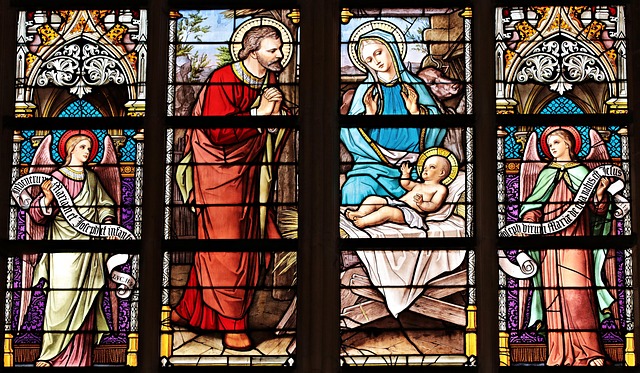Energy-efficient windows equipped with Insulated Glass Units (IGUs) significantly enhance insulation, blocking heat transfer and reducing energy loss. IGUs prevent UV damage, maintain interior temperatures, and lower heating/cooling costs. Their installation involves frame assessment, precise IGU alignment, sealing, and HVAC integration for optimal thermal performance. Regular monitoring, maintenance, and inspections ensure continued efficiency, maximizing utility bill savings while promoting sustainability and home value.
Energy-efficient window installation is a smart step towards reducing your carbon footprint and saving on energy bills. This comprehensive guide explores the benefits of upgrading to insulated glass units, detailing how these advanced windows can revolutionize your home’s energy efficiency. We’ll walk you through the installation process, offer tips for optimal performance, and discuss monitoring techniques to ensure continuous savings. Discover the long-term impact and return on investment of making this sustainable choice.
- Understanding Energy-Efficient Windows and Their Benefits
- The Role of Insulated Glass Units in Energy Efficiency
- Installation Process for Optimal Performance
- Monitoring and Maintaining Your Energy Savings
- Long-Term Impact and Return on Investment
Understanding Energy-Efficient Windows and Their Benefits
Energy-efficient windows are designed to minimize heat transfer, reducing energy loss and keeping indoor temperatures stable. They often feature insulated glass units (IGUs) with multiple layers of glass and a gas fill between them, enhancing insulation. This technology is a game-changer in maintaining comfort levels and lowering heating and cooling costs, making it an environmentally friendly choice that also enhances the overall efficiency of your home or building.
The benefits extend beyond financial savings. IGUs are crafted to block out UV rays, reducing fading and heat buildup, while still permitting natural light to brighten spaces. This dual functionality not only contributes to energy conservation but also creates a healthier interior environment by controlling light exposure. With the world increasingly focused on sustainability, adopting energy-efficient window installation is a proactive step towards a greener future.
The Role of Insulated Glass Units in Energy Efficiency
Insulated Glass Units (IGUs) play a pivotal role in achieving energy-efficient window installations. These advanced glass panels are designed with multiple layers of glass and an air pocket or gas fill between them, creating an effective insulation barrier. This simple yet powerful feature significantly reduces heat transfer, keeping your home warmer during winters and cooler in summers, thereby decreasing reliance on heating and cooling systems.
The efficiency of IGUs is further enhanced by their ability to minimize thermal conductivity. The air or gas trapped within acts as a buffer, preventing external temperature fluctuations from impacting the interior. This results in improved energy performance for buildings, contributing to cost savings and reduced environmental impact. In today’s quest for sustainable living, IGUs are becoming an indispensable component of modern window installations.
Installation Process for Optimal Performance
The installation process plays a pivotal role in ensuring energy-efficient window performance. It begins with meticulous preparation, involving assessing the existing framework and choosing the right insulated glass units (IGUs) tailored to the specific needs of each window opening. Proper sealing is crucial; this involves using high-quality gaskets and adhesives to create an airtight barrier, preventing heat loss or gain through gaps.
During installation, technicians must align the IGUs precisely, ensuring they fit securely within the frame. This includes adjusting for any misalignments and ensuring proper spacing between panes for optimal thermal performance. The final step involves connecting the window to the building’s HVAC system, allowing for precise monitoring and control of temperature and energy flow.
Monitoring and Maintaining Your Energy Savings
Energy-efficient window installation isn’t just a one-time solution; it’s a commitment to long-term savings. Regular monitoring and maintenance are key to maximizing your energy efficiency gains. Insulated glass units (IGUs), a common feature in modern energy-efficient windows, play a vital role here. By tracking temperature differences between interior and exterior spaces, you can identify potential issues like poor sealing or air leaks around the IGU.
Scheduled inspections, coupled with simple DIY checks like inspecting seals for cracks or damage, can help you address problems early. Keeping your window frames clean and ensuring proper closure also contribute to maintaining optimal energy efficiency. Regular maintenance not only preserves your investment in energy-efficient windows but ensures they continue to deliver significant savings on your utility bills year after year.
Long-Term Impact and Return on Investment
Energy-efficient window installation offers more than just immediate cost savings; it’s an investment in your home’s long-term sustainability and value. Insulated glass units, a key component in modern energy-efficient windows, play a significant role in reducing heat transfer and minimizing energy loss. Over time, these improvements translate to substantial returns on investment through lower heating and cooling bills.
Additionally, the reduced environmental impact of efficient window systems contributes to a greener home and community. By decreasing energy consumption, you’re not only saving money but also helping to mitigate climate change. This long-term perspective positions energy-efficient window installation as a strategic decision that enhances both your financial well-being and your commitment to sustainability.
Energy-efficient window installation goes beyond initial cost savings. By understanding and leveraging features like insulated glass units, you unlock a more comfortable home environment while significantly reducing energy bills. The proper installation and ongoing monitoring ensure these benefits are realized over time, making it a smart investment for any homeowner looking to optimize their energy consumption and reduce their carbon footprint.
